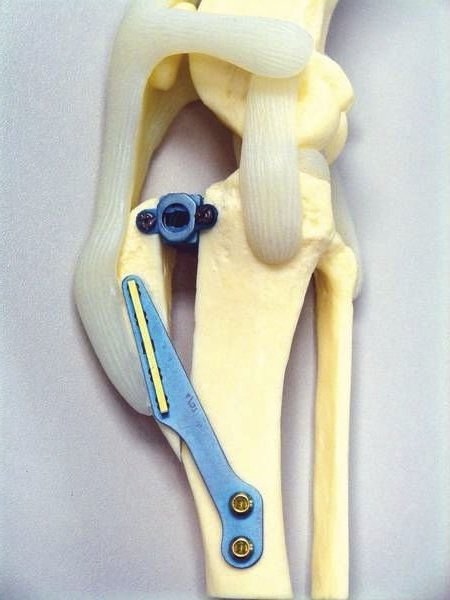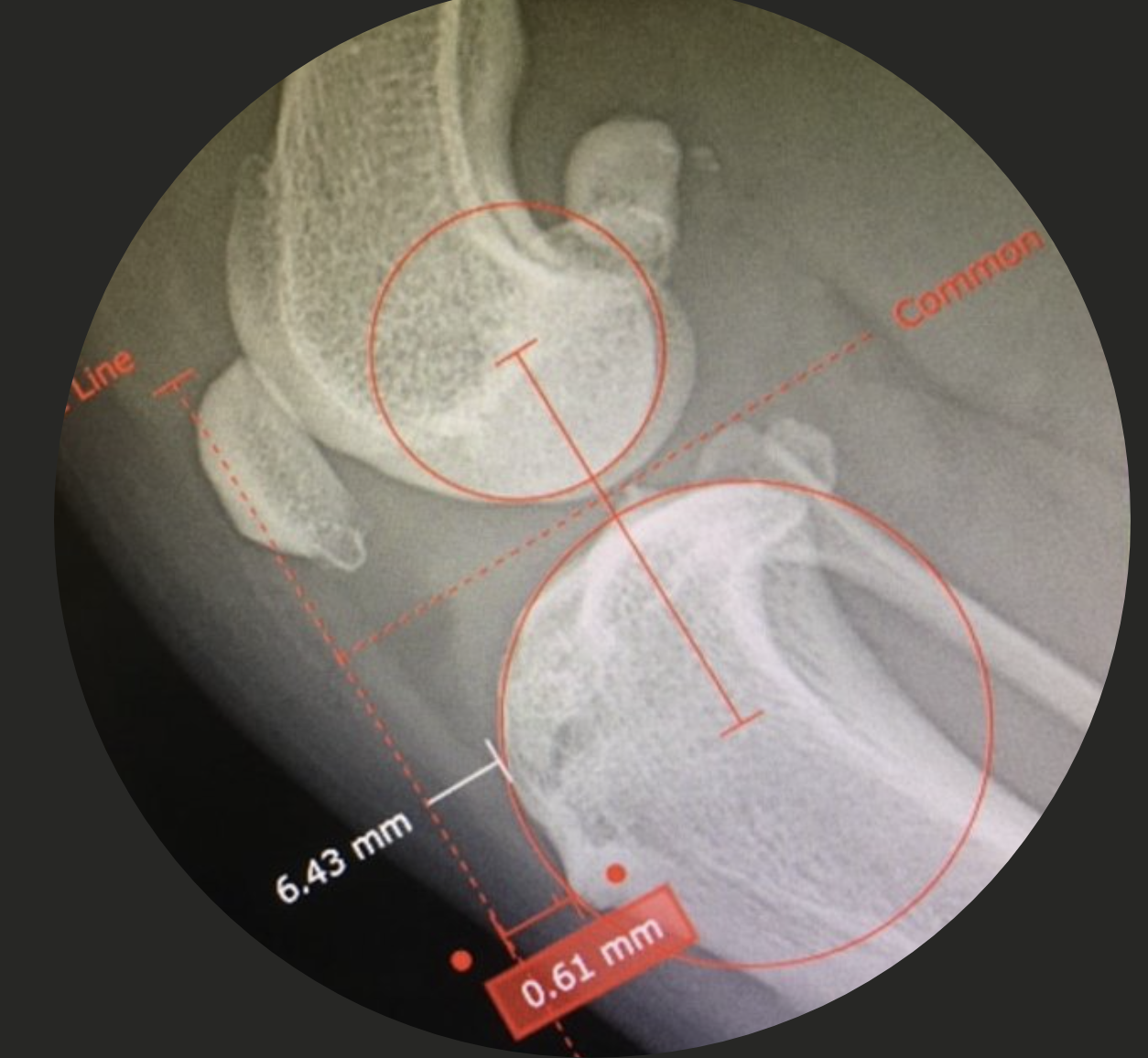Cruciate Ligament Injuries (Knee)
What is a cruciate ligament injury?
A cruciate ligament injury is a tear of the cruciate ligament that causes instability in the stifle. The cruciate ligament lies in between the femur and tibia bones and they work together to provide stability in the knee. Typically, dogs develop cruciate ligament injuries on their rear limbs when on a walk, running at the park, or performing any rigorous activity. They begin to limp and are non-weight bearing on the limb. This injury is very common and we can compare this injury to a human tearing their ACL. It is very painful and if not treated right away, can cause damage to the other limb.
What is the protocol for a cruciate ligament injury for potential surgery?
Dogs need to be carefully evaluated to see if they need TTA surgery.
Following the initial examination, additional palpation under sedation or light anesthesia may be necessary. This may enable the detection of more subtle instability of the knee as occurs with partial rupture of the cranial cruciate ligament.
Very specific X-rays need to be obtained of the stifle and tibia. The presence and severity of osteoarthritis can be assessed and the angle of the top of the tibial plateau measured. This enables planning prior to surgery. The position of the cut on the bone, the amount the bone needs to be advanced, and the size of implants to stabilize the bone in its new position can be evaluated.
Some dogs with ruptured cranial cruciate ligaments tear their meniscus. Damaged portions of the meniscus need to be removed. At the same time, remnants of the ruptured ligament can be trimmed.
A TTA Surgical Model
Radiographs show immflammation of the stifle joint to confirm a cruciate ligament injury. Before surgery, Dr. Pedraza uses new veterinary software to measure the tibia and femur bones and space in order to provide the best implants possible.
Dr. Pedraza uses titanium implants in order to solidify and stabilize the stifle. These typically never need to be removed
What does a cruciate ligament injury (TTA) surgery consist of?
TTA is the abbreviation for tibial tuberosity advancement. This a surgical procedure used to treat cranial or anterior cruciate ligament rupture in the knee joints of dogs. It involves cutting the top of the tibia, moving it forward and stabilizing it in its new position. Dr. Pedraza uses titanium plates for his TTA surgeries which is the strongest and most stabile plate on the market. Bone graft is placed around the bone of the tibia to accelerate the healing process.
X-rays are obtained at the end of the operation to assess the new angle of the top of the the tibial plateau relative to the patellar tendon and to check the position of the implants. A light bandage is applied. Most dogs can go home the day after surgery.
What is the recovery period like?
A TTA typically requires 6-8 weeks of recovery. This means no running, jumping, going up or downstairs at all for the duration of the recovery time. Pet’s are typically lame at first but then gradually improve as they move further into their recovery period. Pain medication is usually given for the duration of the recovery period if necessary. Bandages are required for the first few days after the procedure. Radiographs must be taken 6 weeks after the procedure to assess healing of the operated site.



